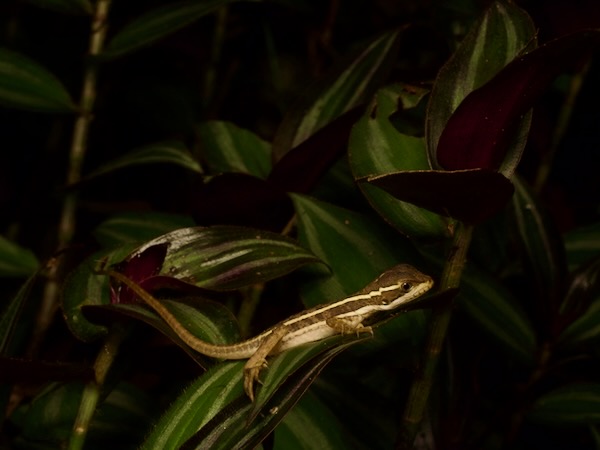Basiliscus vittatus
—
Brown Basilisk
Also known as:
Striped Basilisk, Yellow-striped Basilisk, Jesus Christ Lizard
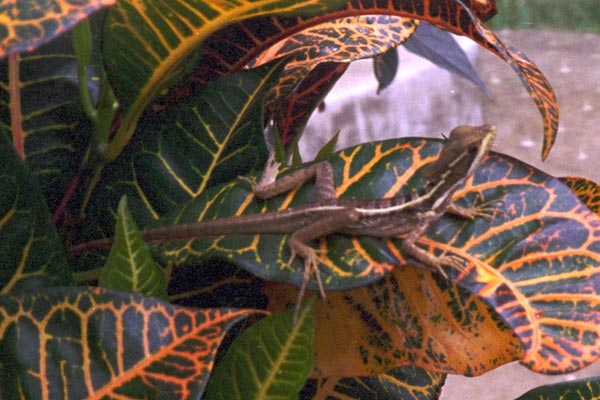
This is a juvenile. Basilisks can run really fast on their hind legs, and with their spread-out back feet they can even run across water, a habit that has earned them the nickname "Jesus Christ lizards".
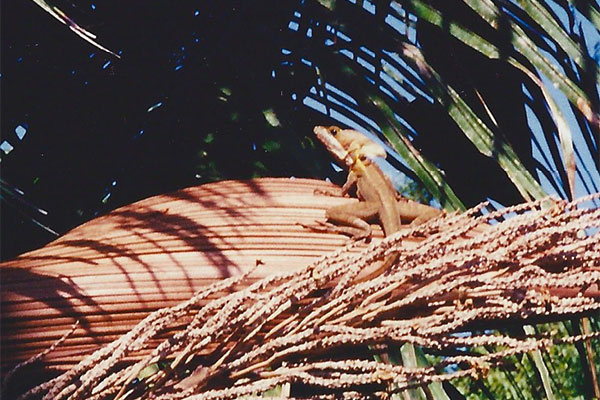
The large crest is a mark of an adult male.
This species is officially known as the Brown Basilisk, but the Common Basilisk is also sometimes called Brown Basilisks, to distinguish them from the beautiful Basiliscus plumifrons, or Green Basilisk.
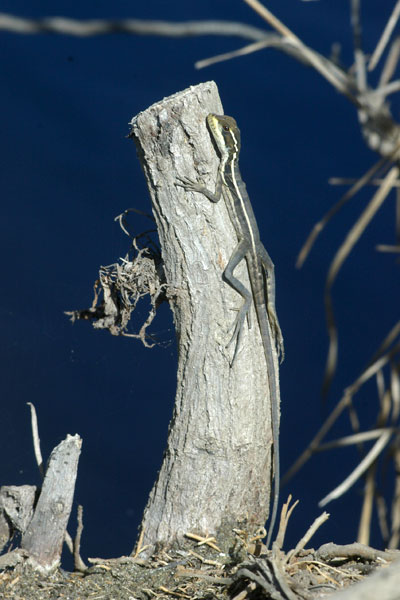
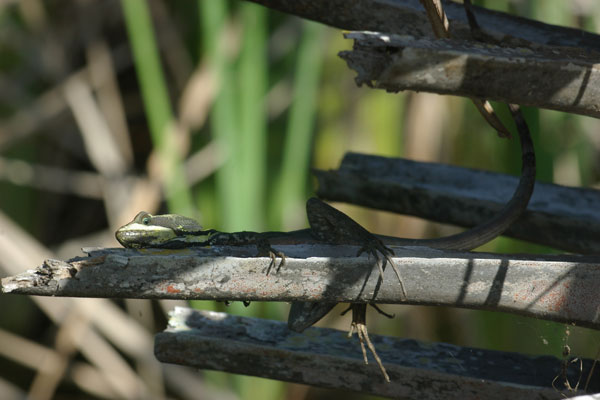
This is yet another non-native species that's now running wild in South Florida, along with the Cuban Brown Anole, the Puerto Rican Crested Anole, the Green Iguana, the Tropical House Gecko, the Brahminy Blind Snake, and many others.
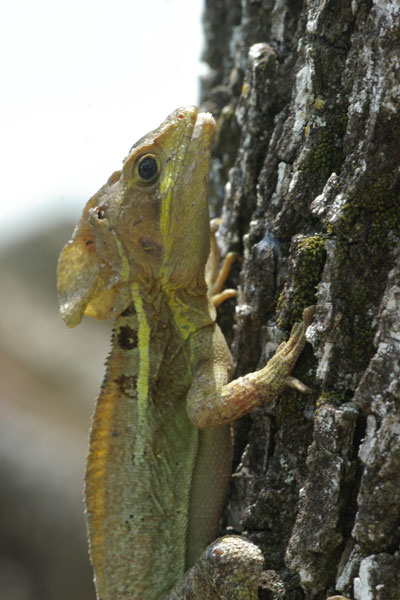
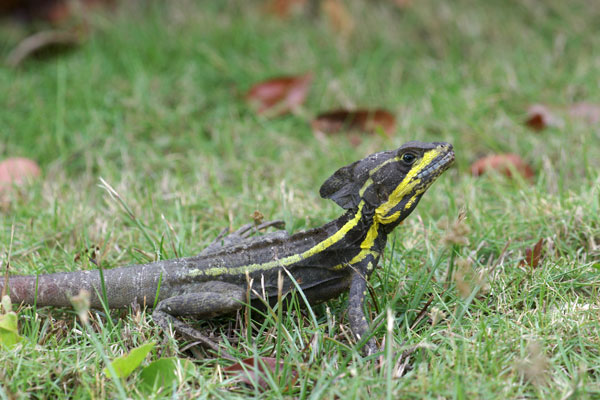
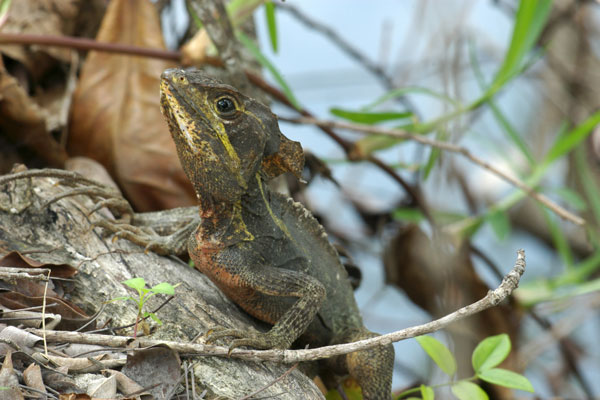
Along the edge of the Red Road canal, a large population of brown basilisks thrives. These three are all large adults. The last one is particular old and grizzled (but still remarkably fast).
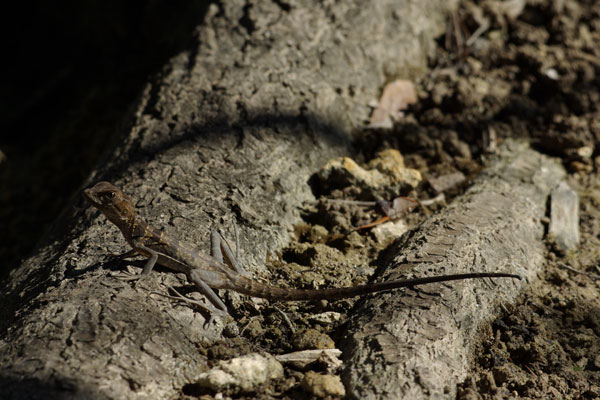
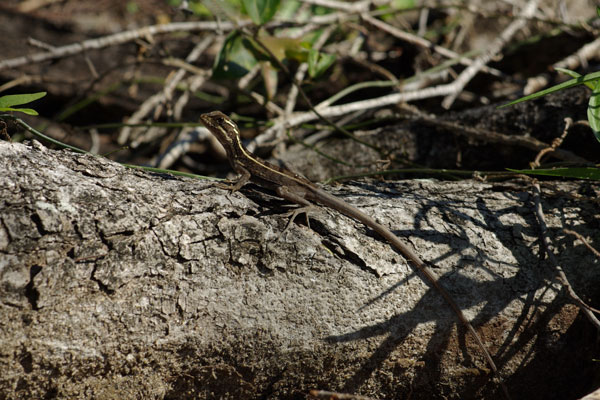
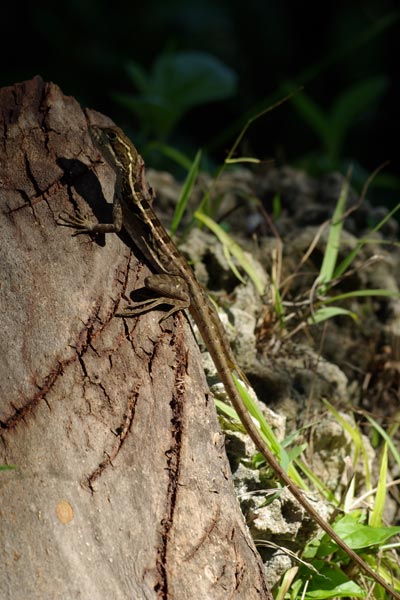
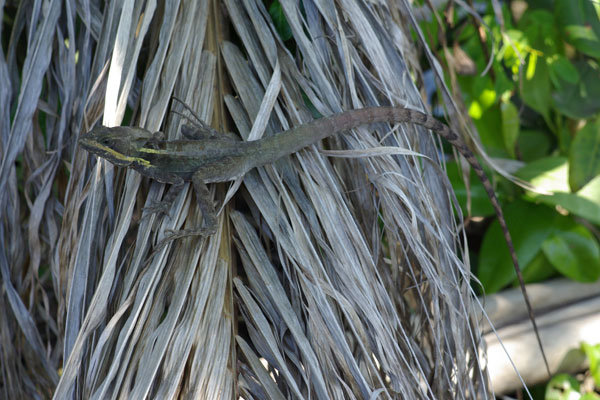
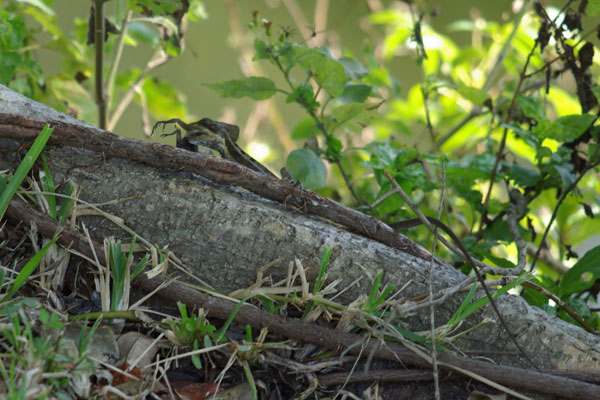
A warm December day brought out the non-native Florida basilisks again in large numbers. The first four here are in order of increasing age and size, from a tiny hatchling (cute!) to a full-sized adult (what a tail!). The fifth and last photo shows a subadult basilisk snacking on a Brown Anole, another non-native Floridian lizard. These basilisks are extremely fast and quite shy, so it's always a challenge to notice them from far enough away to get a photo before they speed off into the bushes or across the water.
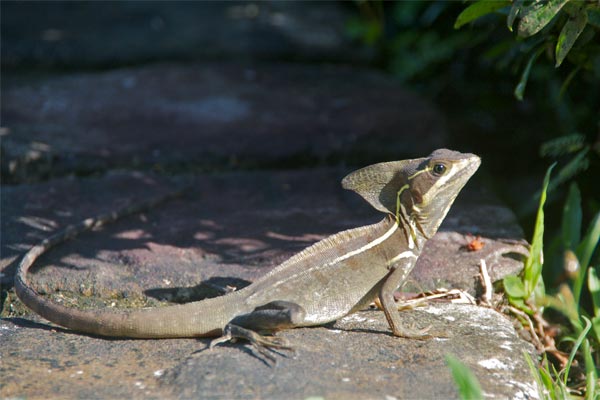
It had been many years since I saw one of these dramatic lizards in their natural habitat. Well, almost natural anyway. This one was basking on a rough brick patio. A fine lizard in the grand scheme of things, but it really loses its luster when compared to its sympatric green cousin.
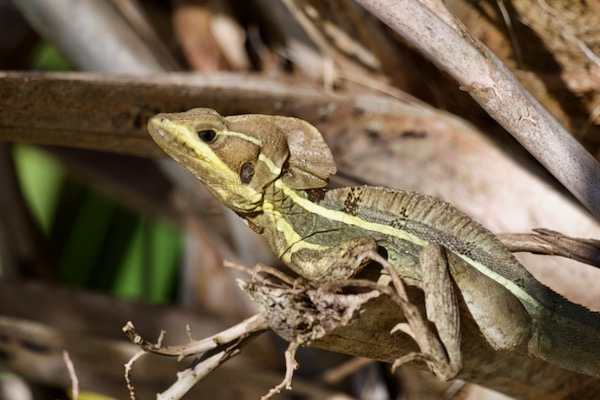
This was my first trip to South Florida with my new camera system (Lumix G9, replacing decades of Pentax use), so I naturally had to visit as many old friends as possible to test it out on.
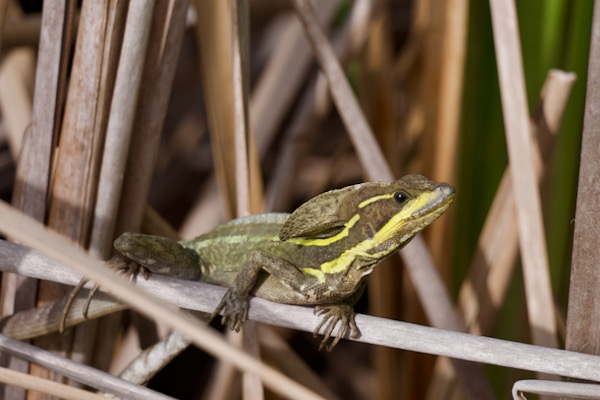
This is probably a different individual than the one I photographed yesterday. Either way, both of them are quite good looking.
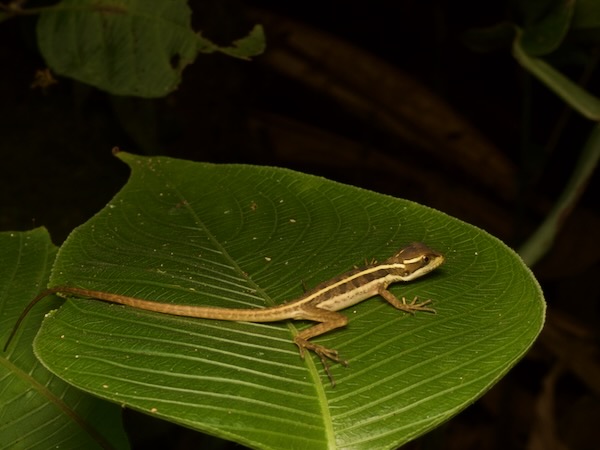
The first few days of my Guatemala trip were in the highlands, where no basilisks dared dwell. As soon as we got down to the lowlands, they started showing up.
Here is a list of all the reptiles and frogs I saw on this trip to Guatemala.
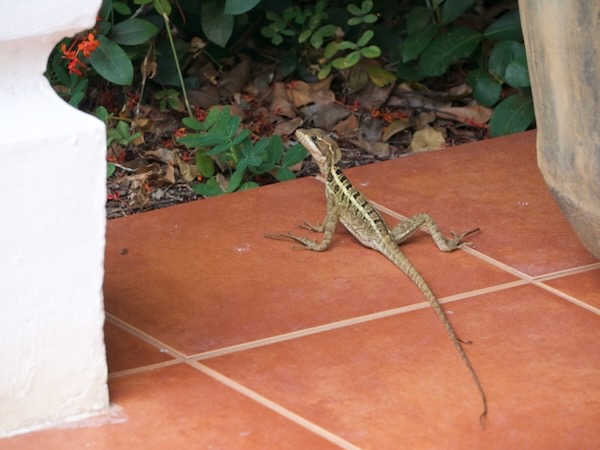
But more often I see them sleeping at night. (To be clear, when this happens, it is the lizard and not me who is sleeping.)
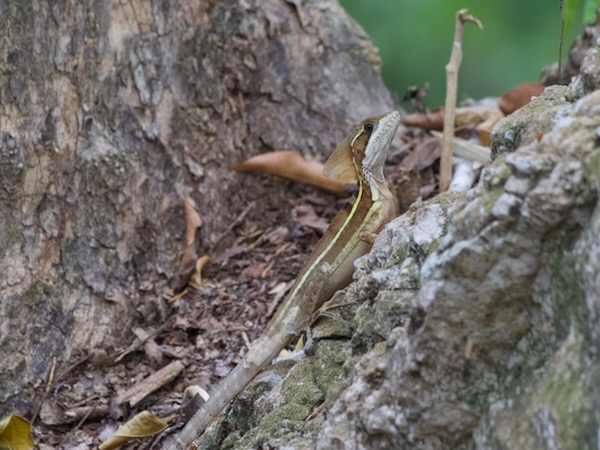
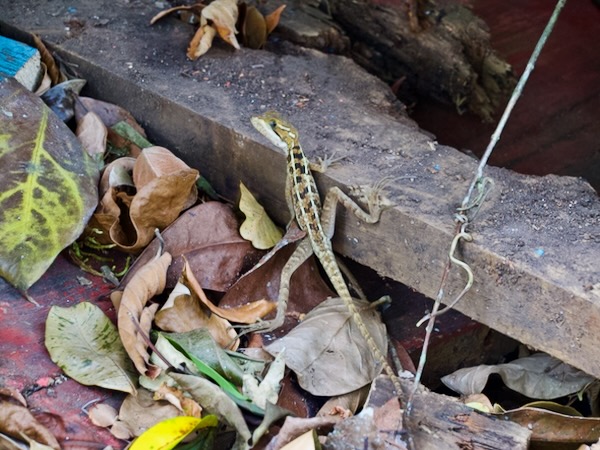
Hey look, sometimes I see basilisks in natural habitat during the day!
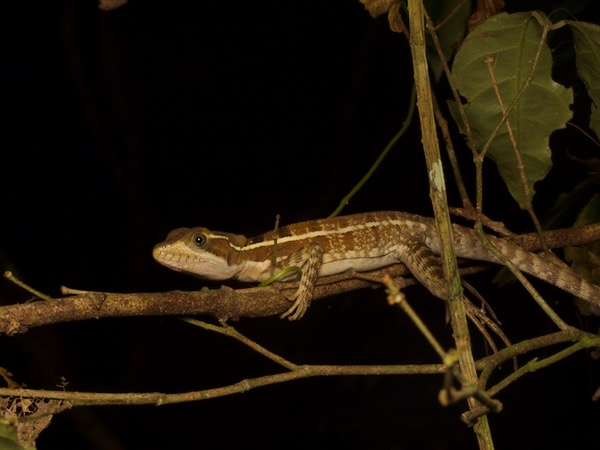
This nicely-marked adult wanted to come into my room, until it saw me.
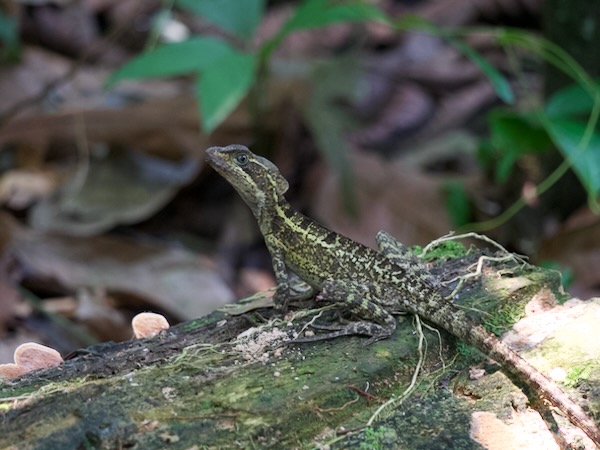
This was a very distinctively marked and large individual, presumably an adult female due to the large size but small crest.
Printed references:
- Bartlett, R. D., Bartlett, P. B. 1999. A Field Guide to Florida Reptiles and Amphibians
- Campbell, J. A. 1998. Amphibians and Reptiles of Northern Guatemala, the Yucatán, and Belize
- Conant, R., Collins, J. T. 1998. Peterson Field Guide to Reptiles and Amphibians of Eastern and Central North America, Third Edition, expanded
- Crother, B. I. (ed.) 2017. Scientific and Standard English Names of Amphibians and Reptiles of North America North of Mexico, with Comments Regarding Confidence in Our Understanding, Eighth Edition
- Lee, J. C. 2000. A Field Guide to the Amphibians and Reptiles of the Maya World: The Lowlands of Mexico, Northern Guatemala, and Belize
- Lee, J. C. 1996. The Amphibians and Reptiles of the Yucatán Peninsula
- Rogner, M. 1997. Lizards
- Stafford, P. J., Meyer, J. R. 2000. A Guide to the Reptiles of Belize
